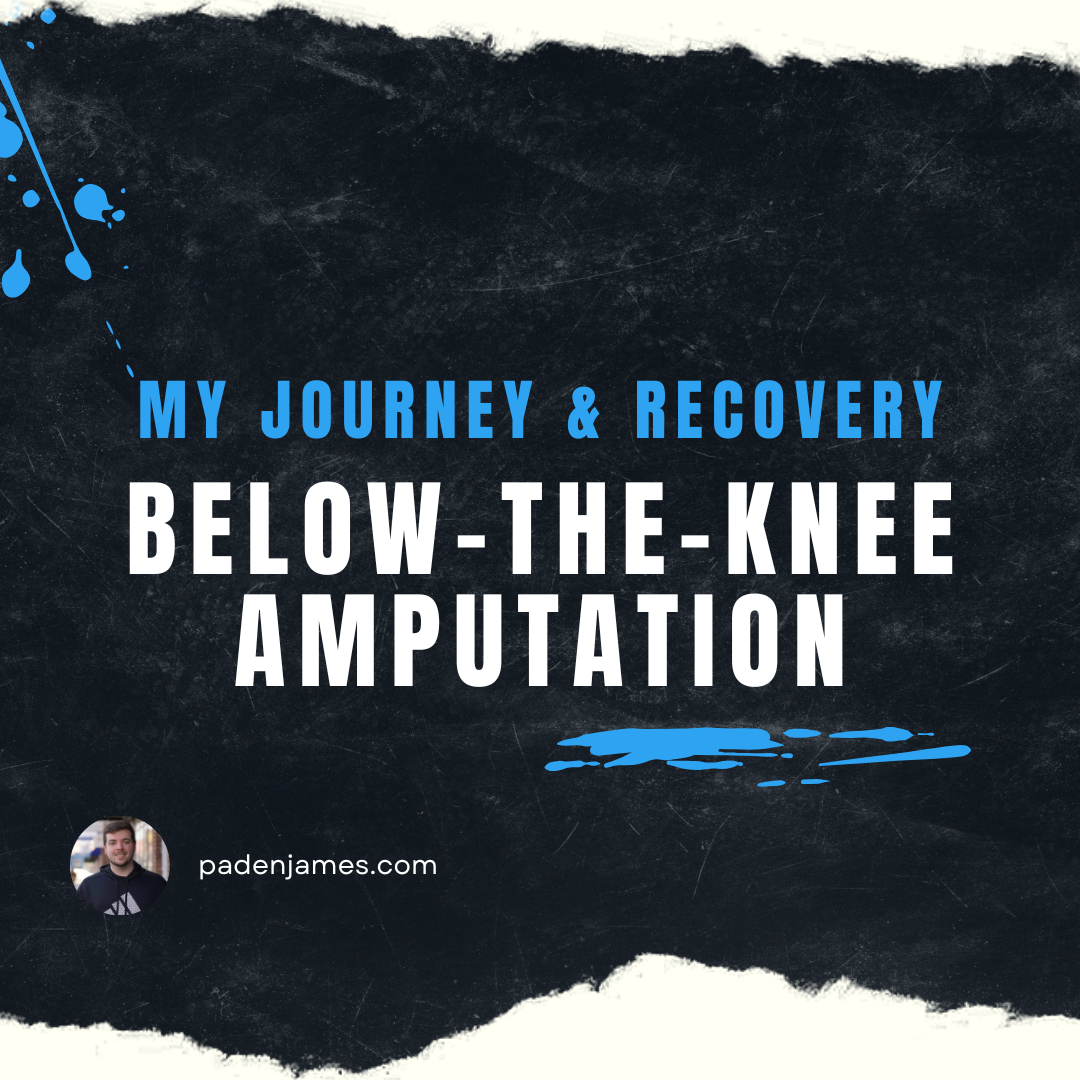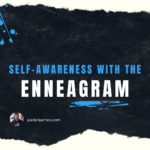Introduction
Hello, and welcome to my blog! My name is Paden James. At the age of 32, I became a below-the-knee amputee after decades of struggling with chronic wounds, scleroderma (an autoimmune disease affecting the skin and connective tissue), and a rare form of skin cancer on my foot.
Life has thrown many obstacles my way over the years. From losing my home in a tornado as a teenager to enduring several years of health issues and chronic pain, I’ve had to learn how to adapt, persevere, and find strength in even the hardest moments.
Through these challenges, I’ve drawn on the insights I’ve gained from the Enneagram and personal development strategies to cultivate a growth mindset, face difficulties head-on, and build resilience in the face of uncertainty.
I hope that sharing my story inspires you to embrace your own challenges, uncover your inner strength, and keep moving forward with resilience and purpose.
The Road to Amputation
For as long as I can remember, my health has been a challenge. When I was 12 years old, I was diagnosed with an auto-immune and skin disease called Morphea (also known as localized scleroderma). This autoimmune disease causes inflammation and thickening of the skin from excessive collagen production. It is not a fatal disease, and although my condition never progressed to systemic scleroderma (affecting internal organs), it can affect a person’s quality of life due to the changes in the appearance of the skin, joint contractures that limit movement, and deformities of the face or extremities.
In my case, the overproduction of collagen on my skin caused a loss of flexibility and the development of chronic wounds, particularly on my left foot. Even minor friction or bumps would create open wounds that took months, or even years, to heal. For two decades, I dealt with these recurrent chronic wounds that caused constant pain and significantly limited my mobility.
At age 32, while undergoing wound care treatment, I noticed a new spot at the top of my foot. At first, it looked just like other wounds in their beginning stages. but it became increasingly painful. A large mass grew very quickly over the course of the next 3-4 months.
None of the doctors I saw or were referred to could figure out what was going on or what was causing the mass until I saw an orthopedic oncologist, who immediately suspected it was a form of squamous cell carcinoma (skin cancer) within an open wound. A biopsy confirmed this.
Thankfully, the cancer was localized and hadn’t spread to my lymph nodes or organs, but my history of poor healing left very few options for treatment. My doctors recommended a below-the-knee amputation to remove the cancer and give me the best chance at a better quality of life.
Though it was scary, I was assured that I could still have a full and fulfilling life. I was also looking forward to not having to deal with the excruciating pain, the exhausting daily wound care routines, and the inability to do basically anything at all because of those things.
The operation needed to be done quickly to prevent the cancer from spreading systemically or leading to sepsis. The biopsy was performed and the cancer was confirmed, and I had the below-the-knee amputation surgery about three weeks later.
Looking back, I can see how understanding my Enneagram type (a Type 9) helped me prepare for this life-altering moment. Despite my default setting of just going along with whatever I was told, I found courage and support to speak up, advocate for myself, and take action in the face of uncertainty. This gave me clarity, focus, and confidence during an incredibly overwhelming time. It wasn’t just about the physical challenges—it was about staying mentally strong and trusting that I could adapt to this new reality.
I learned, as I prepared for this new season and many unknowns, that I needed to speak up and advocate for myself, to take action even in the face of uncertainty and discomfort, and to voice my opinions and frustrations if things weren’t going how I expected.
I tend to have a positive (maybe even an overly idealistic) outlook on things, but I knew I’d be experiencing a lot of anxiety, stress, and frustration. I’d have to be patient with myself, get a better understanding of what was ahead, and work hard at speaking up even though it’s so uncomfortable for me. I am so used to keeping the peace and managing other people’s emotions that I had to learn that it was okay to focus on myself and prioritize my needs, healing, and well-being during an incredibly overwhelming time as I adapted to this new reality.
The Surgery
For several weeks leading up to the surgery, I was in a ton of pain. That final week before the surgery was particularly challenging because I had to stop taking pain medication before the procedure. This was difficult, but I knew I just had to grit my teeth and get through it.
I was still doing daily wound care, and because I was dealing with so much pain, I felt completely useless. I was unable to help with anything around the house and struggled to focus on anything other than the pain and discomfort.
I was also nervous, having dealt with a long history of wounds and issues with healing. Will the amputation be successful, or will it have difficulties healing and lead to more ongoing wound care/pain management like before?
Although I had anxieties about my surgery and navigating life as an amputee, I was hopeful that a below-the-knee amputation would alleviate the pain, remove the cancer, and enable me to have a better quality of life.
On the day of the surgery, everything happened quickly. I was asked some pre-operative questions and then was given anesthesia. I don’t remember anything after they started wheeling me to the operating room.
The next thing I knew, I was waking up in my hospital room. I felt a little drowsy and out of it, but I immediately looked to see that everything was okay and, honestly, to see the reality of the amputation to begin processing it.
The relief was pretty much immediate. For the first time in months, I wasn’t in excruciating pain. Those initial days felt like a fresh start, even though I knew challenges lay ahead.
Adapting To A New Normal
After two days of recovery in the hospital, I was transferred to an inpatient rehabilitation hospital. There, I worked with physical therapists and occupational therapists to navigate walking and performing everyday tasks without my left foot.
The therapists guided me through different activities, such as:
- Mobility Training: using assistive devices to get around, going up and down curbs and stairs, getting in and out of a vehicle, exercising, and proper stretching to promote healing
- Daily Tasks: Showering, doing laundry, preparing meals, washing dishes, taking out the trash, and other household tasks
- Accessibility Setup: How to adapt and rearrange items in my home for better accessibility for my new mobility needs
- Energy Conservation: Learning how to manage and conserve my energy throughout the day
Adapting to this new normal has been a humbling and empowering experience. Every step of the process—physical therapy, relearning daily tasks, and adjusting to my new mobility—has challenged me in ways I never expected.
As a Type 9 on the Enneagram, I’m inclined to stay comfortable to avoid disrupting peace (both internally and externally). I’ve had to challenge myself to step out of my comfort zone, work on understanding that my needs are important and matter, and that I can ask for help from others when I need it—a lesson I continue to work on. While I felt that I did a great job getting through the rehab process, learning to ask for help when I needed it and realizing that things take a lot more time and energy as an amputee have been my biggest mental adjustments.
Reflecting on Life Before Surgery
Before the tumor development and the resulting pain and inability to walk without assistive devices, I still had several limitations.
- Simple tasks like standing or walking were very painful
- I wasn’t really able to bend, lift, or maneuver very well
- I couldn’t wear normal supportive shoes and had to wear slip-in styles of shoes (the only things that didn’t irritate my foot and cause excessive pain or cause more issues)
- I couldn’t take showers/bathe, or get into water like normal because my foot couldn’t get wet without causing extensive issues; therefore, I had to use waterproof covers (similar to those people use when they have casts on) to keep everything dry
- I had to do daily wound care, which was time-consuming and painful
- I had several doctor appointments every week that were physically, mentally, and emotionally draining, especially the ones that didn’t give any answers or positive directions for making progress and healing
Most people didn’t understand what I was going through because the scleroderma was mostly a hidden condition. I kept my scars and lesions covered, often feeling self-conscious, and never really talked about it.
As an Enneagram Type 9, I tend to withdraw and conserve my energy when life feels overwhelming. While this has helped me survive difficult times, it also made me realize how important it is to lean into my growth path during this new journey. This surgery forced me to step into that growth mindset. By focusing on my goals and on what’s possible, I’ve been able to find optimism and purpose in the recovery process. Without the constant pain and limitations from the scleroderma and wounds, I believe I’ll be able to do more than I ever could before.
Phantom Pain and Nerve Pain
Initially, the biggest struggle I experienced was phantom nerve pain caused by the severed nerves that used to send signals between my brain and my foot. These nerves are still active, but are confused about what they’re supposed to do after the below-the-knee amputation. That has thankfully subsided for the most part thanks to an operation called Targeted Muscle Reinnervation (TMR). At the time of writing this, the current focus is working with a prosthetist and get a prosthetic leg.
Moving Forward
Throughout this journey, I have experienced so much generosity, support, and encouragement from family and friends. I’m also grateful for the expertise of the medical teams I worked with. I’m truly blessed to have every one of them in my corner.
I’m still adjusting to this new chapter of my life. At the time of writing this, it’s been just over two weeks since my below-the-knee amputation surgery, and I recently returned home and am working on getting back to a sense of normalcy.
Right now, I’m primarily using a walker, occasionally switching to a wheelchair as needed. Once I am fully healed from my surgery, I will be getting a prosthesis and learning to walk again. My biggest goal right now is to be up and walking for my wedding in September 2025, and I’m optimistic that I’ll get there with time and effort.
Staying positive and maintaining an optimistic outlook has been paramount. I’ve also been working to educate myself about the below-the-knee amputation post-surgery and recovery process, listening to the stories of other amputees and how they’re living fulfilling purposeful lives.
This journey has deepened my understanding of how self-awareness and resilience can help us grow, even in the face of uncertainty. As a Type 5, I’ve learned that balancing research and preparation with action is essential to navigating challenges like this.
By sharing my story, I hope to remind others that even the most demanding challenges can lead to growth. With the right mindset, we can find strength in our struggles and move forward with purpose and intention. Thank you for joining me on this journey!
This journey has strengthened my desire to help others with personal growth, overcome life’s challenges, and to live with purpose. By sharing my story, I hope to remind others that even the most demanding challenges can lead to growth. With the right mindset, we can find strength in our struggles and move forward with purpose and intention.
If you’re interested in learning how the Enneagram can guide you on your path to growth, stay tuned for more insights—or reach out to connect. Thank you for joining me on this journey!



